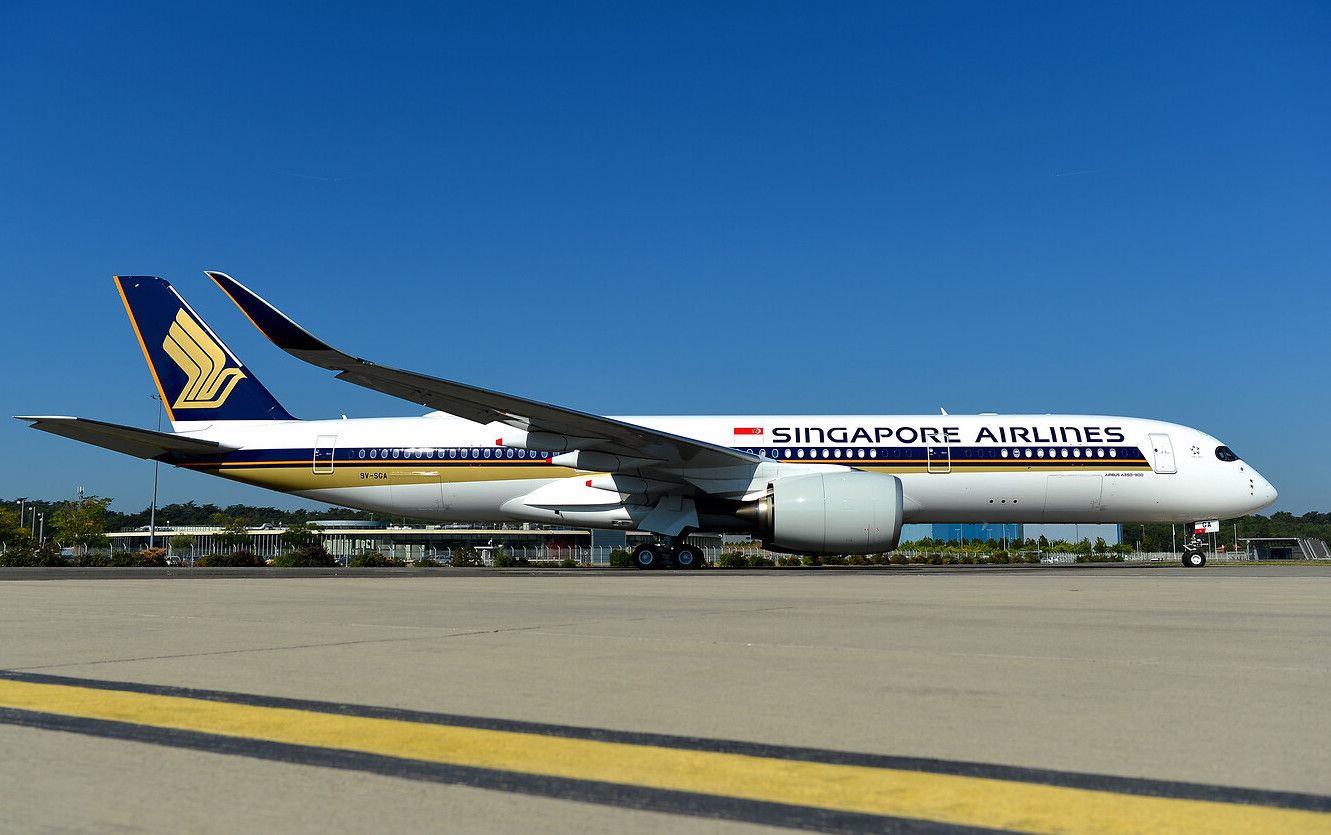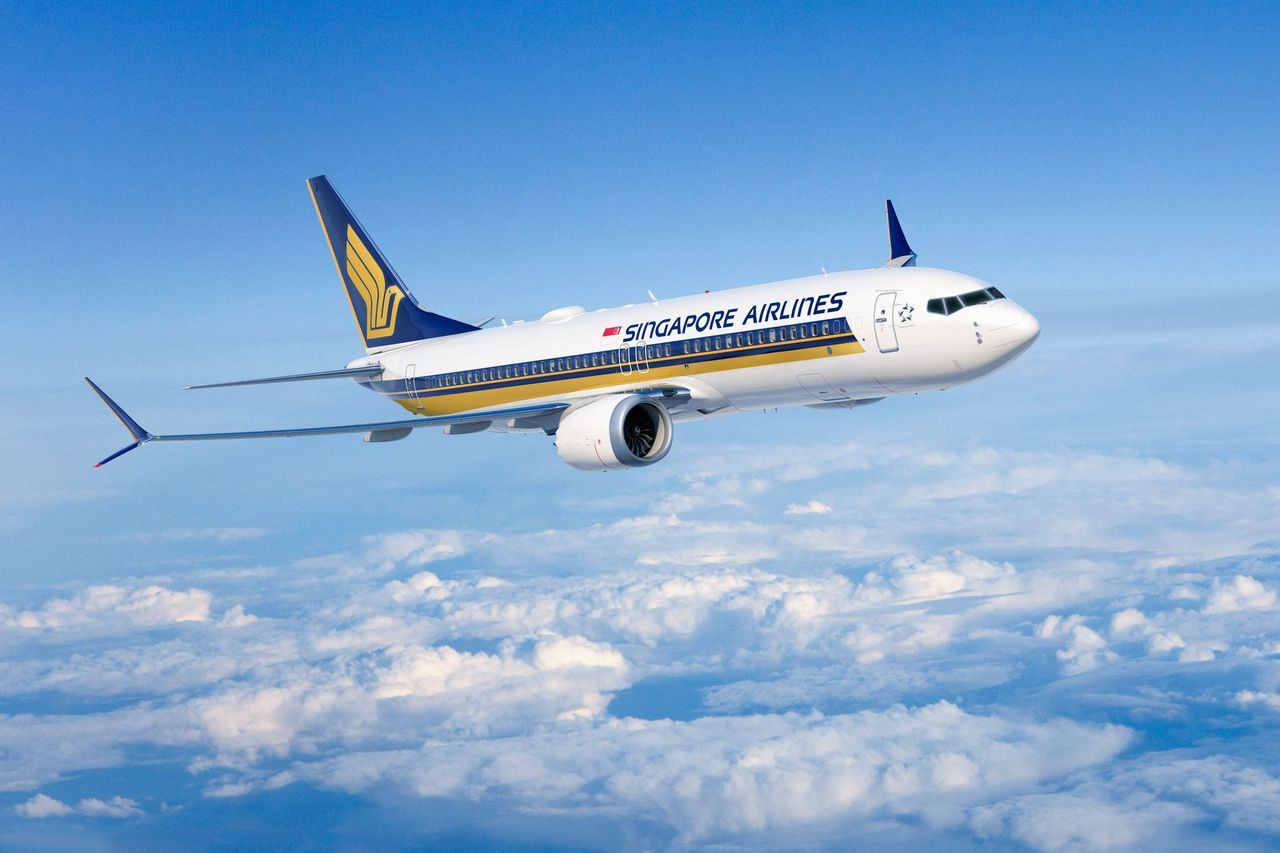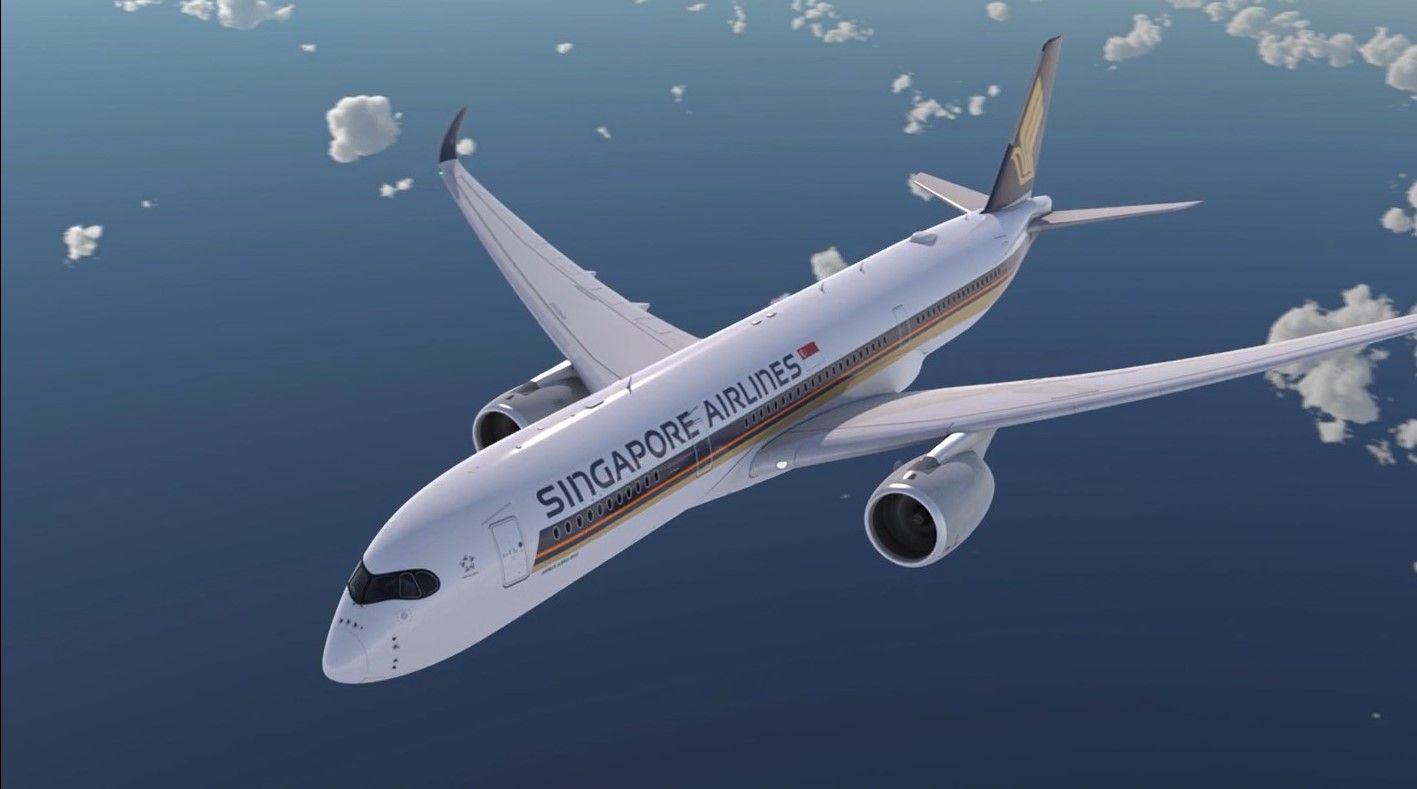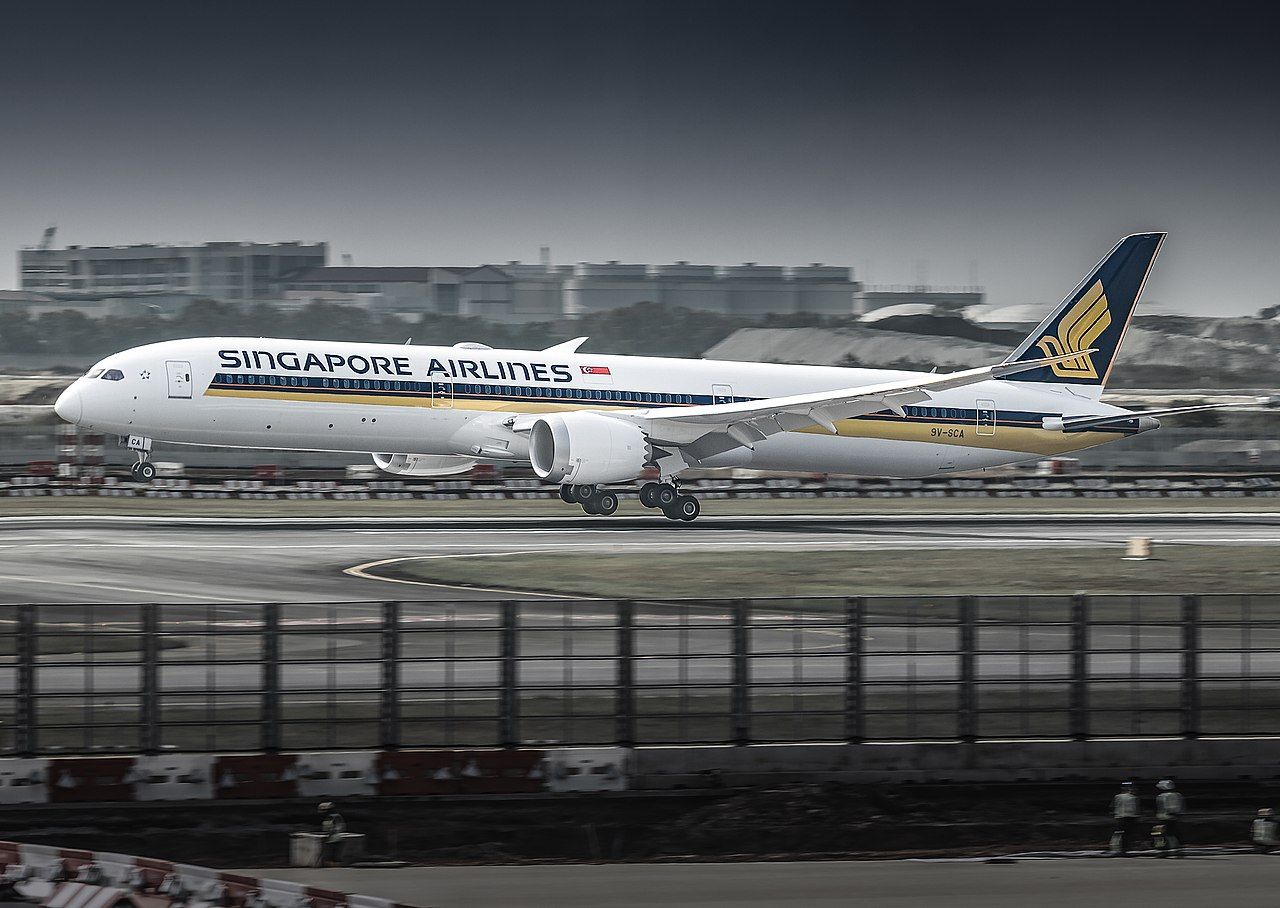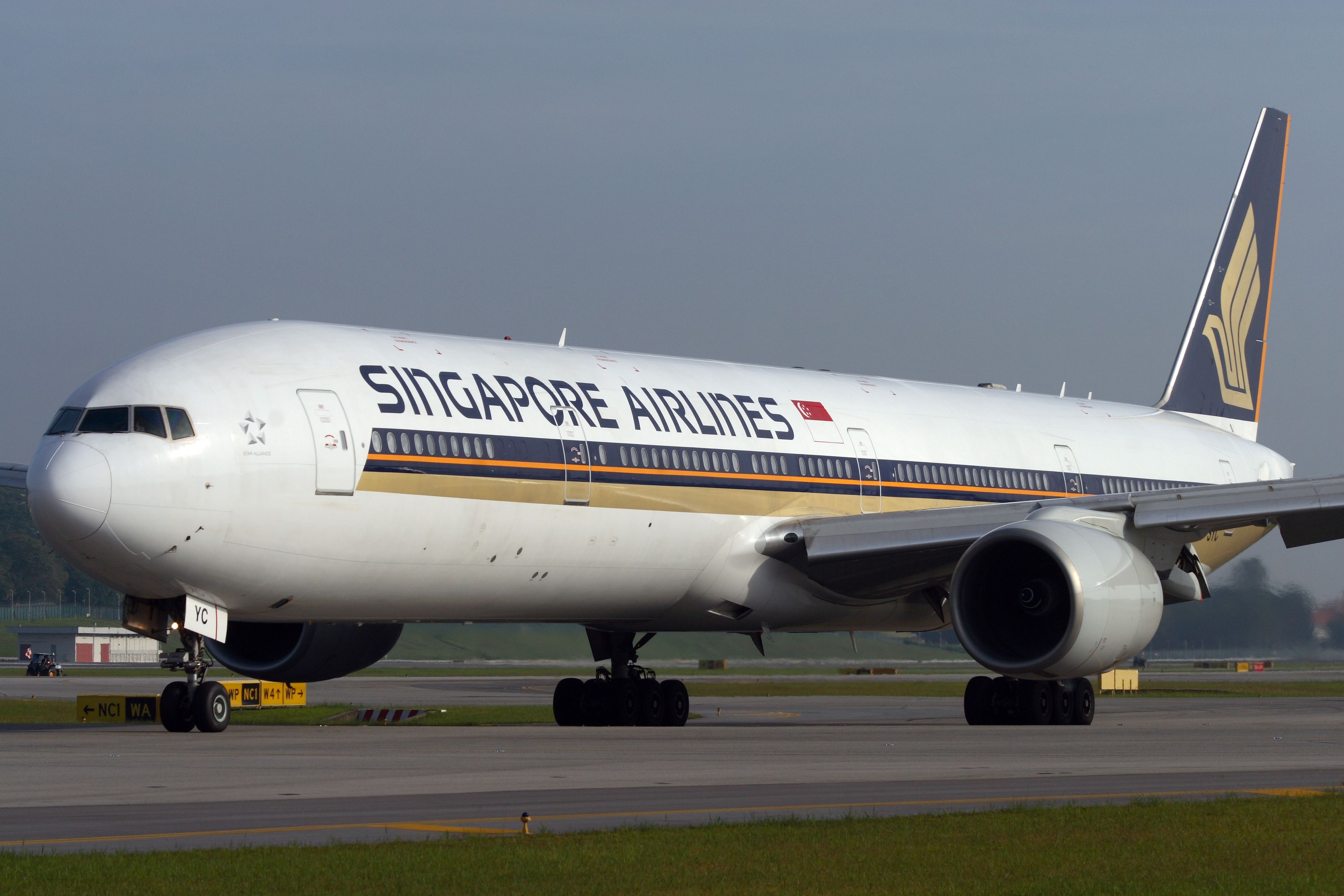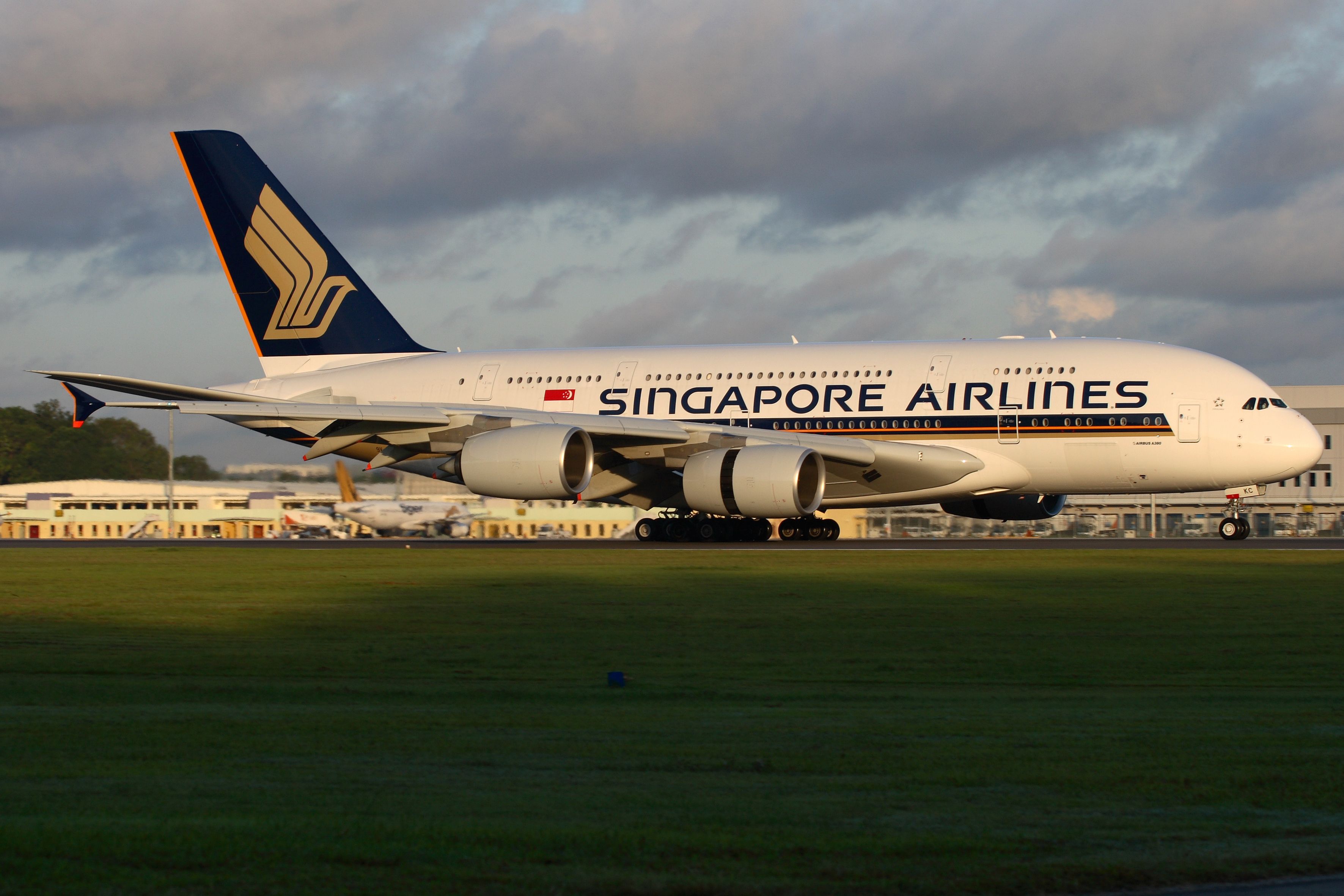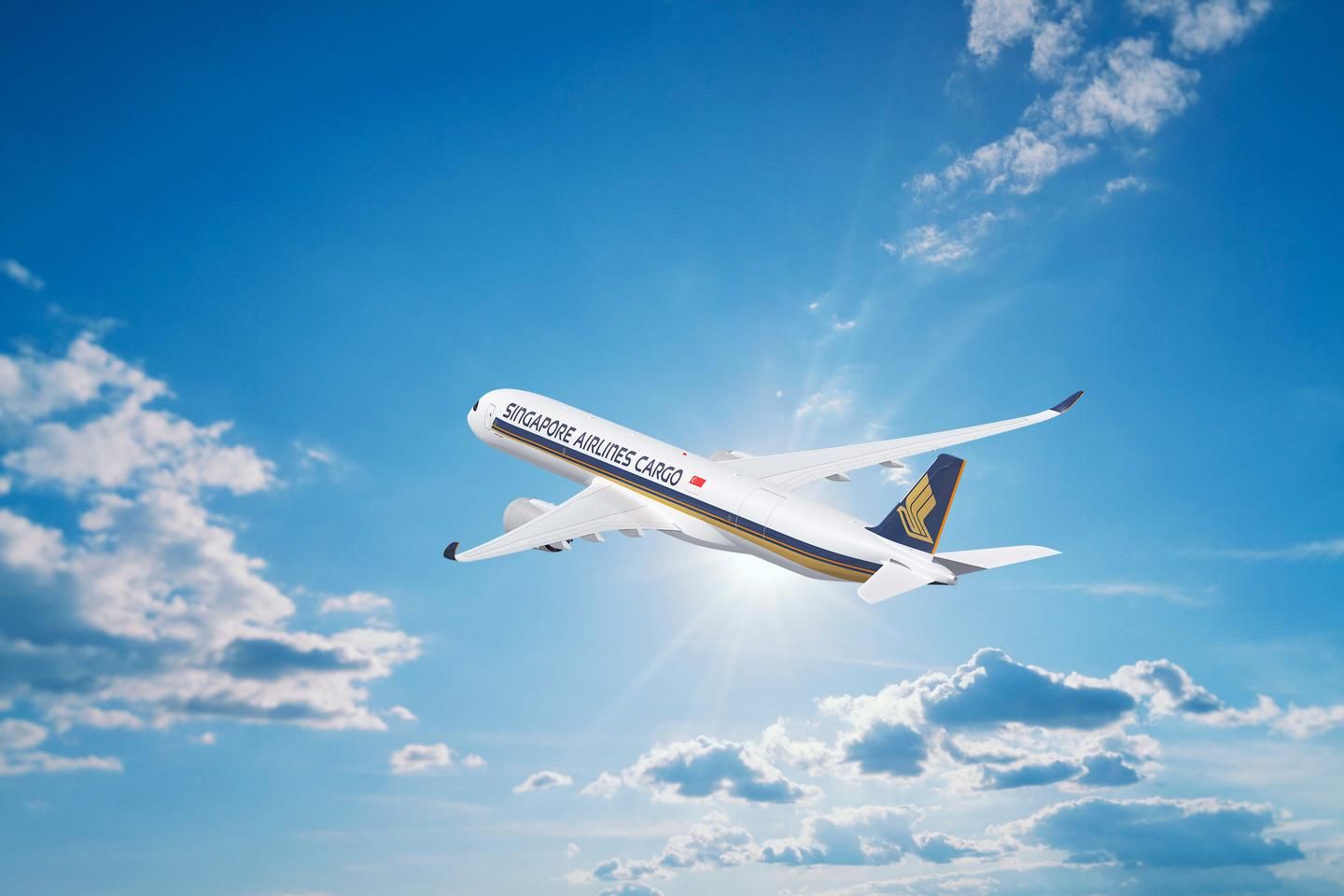In previous years, Singapore Airlines was mainly a widebody operator but has since restructured its group operations to include the Boeing 737. A major A380 carrier and now operator of the world’s largest fleet of Airbus A350s, let’s take a look at the Singapore Airlines fleet in 2022.
Often regarded as one of the best full-service carriers in the world, Singapore Airlines connects the world to and through its hub at Singapore Changi Airport. With about 140 aircraft in its mainline commercial passenger fleet, the carrier operates a mix of Airbus and Boeing aircraft.
The newest type for Singapore Airlines
As we often do with these fleet deep-dive articles, let’s start with the carrier's smallest aircraft. In this case, it's the Boeing 737.
The airline currently has 22 of these narrowbodies. Nine of them are the older next-generation -800 variant, which have an average age of roughly seven and a half years. Meanwhile, the other 13 jets are the newer MAX 8, which average three and a half years.
Data from ch-aviation indicates that the carrier has 24 more MAX aircraft yet to be delivered, with at least one of these already built. This particular jet is registered 9V-MBM and had its first flight in November 2019 with the intention of being delivered to Silkair. Strangely, it appears that this particular aircraft has been in storage since its initial test flights.
Why was the 737 a recent addition?
In speaking of Silkair, anyone who has followed the aviation scene in Asia over the past few years knows that Singapore Airlines didn’t originally order its current 737 for its own operations.
While Singapore Airlines operated the Boeing 737 decades ago, its current narrowbodies come via former Singapore Airlines Group subsidiary, Silkair, which operated the group’s low-demand, short-haul operations.
However, with the Silkair brand and its operations being absorbed by Singapore Airlines, the mainline carrier has since taken on the narrowbodies for its own services. The first of these Singapore Airlines 737s took off for regular passenger service in March of 2021, going from Singapore to Phuket.
Here’s what the airline had to say about the move:
"As we take to the skies in the Singapore Airlines livery, and embark on our transition journey, we are also elevating our promise—so you can enjoy a world- class experience, no matter how short your journey."
Widebody comfort in a narrowbody (at least in business class)
With a reputation of premium service to uphold, Singapore Airlines made sure that its 737s were modified for their new role. At the heart of the refurbishment are 10 business class seats for each aircraft, configured as alternating rows consisting of four, two, and four lie-flat seats. The row with just two flatbeds is particularly attractive, with these throne-style seats offering extra space and storage.
Each seat has a 16-inch IFE screen and in-seat AC power. When seated upright, the 22-inch wide seats offer passengers a spacious 44 inches of pitch. However, they can also recline into fully-flat beds, measuring 76 inches (193 cm) long. This provides comfort levels more often seen with long-haul flights with widebody aircraft.
The world's largest Airbus A350 fleet
Funny enough, the next-largest aircraft in the fleet is the Airbus A350-900, a rather big jump from the 737 MAX 8! The airline doesn’t have any stretched A320 family jets while it has phased out its fleet of 34 Airbus A330-300 jets over the past few years. The retirements began in 2015 with the last A330 leaving in March of 2021.
As for the Airbus A350, Singapore Airlines has become the type’s largest operator in recent months. Over the course of 2021, the airline overtook Qatar Airways for this title. This is largely due to the fact that the Middle Eastern carrier is in a bitter dispute with Airbus and refuses to take delivery of anymore A350s.
It was way back in March of 2016 that Singapore Airlines took delivery of its very first Airbus A350-900 in Toulouse. It was to be the first of 67 A350s on firm order, including seven of the ultra-long-range variant, the A350-900ULR. Today, the average age of the A350 fleet sits at a relatively young three-and-a-half years.
On April 9th, Singapore Airlines took delivery of A350 number 59. While the carrier states on its website that it had ordered 67, ch-aviation data indicates that the airline is only expecting six more at this point, making for a total of 65 of the passenger variant.
Three configurations for the Airbus A350
The carrier’s A350s have three different configurations. One configuration is for medium-haul operations with a business class and economy class. Another configuration is for more standard long haul flights with business, premium economy, and economy classes. The third layout is its special ultra-long-haul configuration, comprised of only premium economy and business class seating.
In case you were wondering how the A350-900ULR differs from the standard model, a press release covering the first delivery to Singapore Airlines states the following:
“The main change over the standard aircraft is a modified fuel system, enabling the fuel carrying capacity to be increased by 24,000 liters to 165,000 liters. This extends the range of the aircraft without the need for additional fuel tanks.”
These special aircraft are typically utilized on the carrier’s flagship service between Singapore and New York. With a great circle distance of 15,349 kilometers (8,288 nautical miles), this flight takes the crown for being the world’s longest regularly scheduled commercial flight.
The Boeing 787-10 Dreamliner
Moving ever-so-slightly up in size, the carrier has 15 Boeing 787-10s. These are the longest variant of the Dreamliner family, which Singapore Airlines uses to fly passengers to destinations such as Hong Kong, Denpasar, Delhi, Perth, and much more.
As the 787-10’s fuel capacity is identical to the 787-9, its extra passenger capacity places a limit on the range this variant can fly. As a result, the type is better suited for higher-capacity, medium-range operations and is considered more of a ‘regional aircraft.’ The average age of the airline’s Dreamliners is just over three and a half years.
At the start of 2021, the airline had orders in for 29 of the 787-10 with Boeing. In February of 2021, the airline converted some of its 787-10 orders into commitments for 777-9s. Additional orders were transferred to its low-cost subsidiary Scoot and downsized to the 787-9. Five more were to be transferred to leasing companies. There is conflicting information between ch-aviation and planespotters.net- as one source indicates that the carrier is expecting an additional eight from Boeing, while the other lists nine.
Regardless of the number of undelivered 787s, it’s clear that Boeing’s issues with 787 output have also affected this carrier. As we mentioned in our earlier fleet-analysis articles, Boeing is continuing to work with the FAA on fixing issues with its Dreamliner production. More recent news indicates that this could take place later this year, although Boeing is reluctant to publicly offer a specific date. Other airlines affected that we’ve also covered, include Qantas, American Airlines, KLM, Turkish Airlines, and WestJet.
The Boeing 777-300ER
The next aircraft up in size is the Boeing 777-300ER, of which Singapore Airlines has 26. There is a 27th 777, but this is a 777-200 listed as parked in Alice Springs, Australia. The airline has phased out its 777-200 operations in recent years, so it's unlikely this last -200 will be returning to service.
The airline’s 777-300ERs are all between six-and-a-half and about 15 years of age, and fly a mix of short and long haul services. Going further afield, the jets serve cities like London, Paris, Frankfurt and Zurich, while on the shorter end, the jets visit destinations like Jakarta, Hong Kong, Tokyo, and Seoul.
The first A380 operator
Finally, we come to the largest aircraft in the SIA fleet, and the largest passenger aircraft in the world: The Airbus A380 superjumbo.
In 2007 the airline took delivery of the world’s first Airbus A380 in Toulouse, France. This made Singapore Airlines the type’s global launch customer. The aircraft’s very first service was a flight from Singapore to Sydney on October 25th, 2007.
Since then, a lot has changed with the airline’s A380 fleet. The carrier has taken delivery of a total of 24 superjumbos over the years but has also retired seven of the type. Sadly, the majority of these have either been partially or fully broken up for scrap.
Of the 17 still listed as being part of the Singapore fleet, seven are currently listed as being parked and inactive. Three of these inactive aircraft are listed as being stored in the Australian outback, in the desert region of Alice Springs. The remainder of the airline’s stored A380s are being stored at Singapore Changi airport. The average age for these 17 A380s currently sits at just over nine and a half years.
Keeping the A380 alive with cabin updates
For the last few years, Singapore Airlines has been working hard to refurbish its A380 cabins. From first all the way through to economy, every class has been getting updated and refreshed seating.
Changes to the airline's business and first class suites are the highlight of the update, with both classes offering new premium seating. Some A380s came straight from Airbus with these new interiors. In 2017, Airbus delivered the first “new Singapore Airlines A380” with an upgraded and improved cabin that was apparently the result of four years of development and a “significant investment by the airline.” Indeed, according to Airbus, Singapore Airlines said that it invested about $850 million to develop the new cabin.
The new A380 business class seats recline into a lie-flat bed and are semi-enclosed by "sculpted wings." Seats in the center offer personal dividers that span the entire length of the chair, offering a better sense of privacy. For couples traveling together, the center wall can even be lowered completely to create two fully flat beds side-by-side.
All of this refurbishment work makes us confident that the airline will continue to operate the A380 for at least a few more years in the future, having already invested a great deal of money in new cabins.
When it comes to A380 destinations, Singapore Airlines currently flies the superjumbo to cities like London, Sydney, Delhi, and Mumbai. It also operates a fifth freedom service from Singapore to New York via Frankfurt.
Waiting on Boeing for new aircraft
When it comes to future aircraft types, there are two particular orders to discuss.
The first is the airline’s Boeing 777X order. Singapore Airlines purchased its first 20 Boeing 777-9s back in June 2017, alongside 19 787-10 Dreamliners. The carrier was planning to get its first 777-9 in 2021, but delays to the 777X program have and will continue to significantly delay the airline’s first delivery. A lack of visibility on when the 777-9 will be fully cleared to enter service means that a first delivery to Singapore could take place in 2025 or later.
On the Airbus side, Singapore Airlines will eventually finish taking delivery of its A350 passenger aircraft orders quite soon. However, the airline will accept A350 freighters further into the future. These will obviously be deployed to support the group’s cargo operations.
It was rather recently, on December 15th, 2021, that Singapore Airlines signed a Letter of Intent (LoI) with Airbus for seven A350F freighter aircraft. According to an Airbus statement, the agreement will see the A350F begin replacing the airline's existing 747-400 freighter fleet in the fourth quarter of 2025. About two months later, the order was firmed up in February of 2022. Singapore Airlines joins Etihad and Air France as early customers for Airbus’ upcoming purpose-built widebody freighter.
Conclusion
As you can see by all the types we’ve covered, Singapore Airlines really likes to go big with its aircraft fleet. While it has since said goodbye to the Airbus A340 and McDonnell Douglas DC-10, the airline has replaced these aircraft with modern giants like the Boeing 777 and Airbus A380. Eventually, we’ll see its cargo division replace its Boeing 747-400 freighters with new and efficient freighters from Airbus.
With a fairly even split between Airbus and Boeing, it’s clear that the carrier has good relationships with both planemakers, something that will hopefully carry on into the future as it takes delivery of the 777X and Airbus A350F. At the same time, it will be interesting to see how Boeing’s issues with the 787 and 777X affect Singapore Airlines and its future fleet.
What do you think of the Singapore Airlines fleet? Have you ever flown with the airline? If so, share your thoughts and experiences by leaving a comment- and of course, let us know which aircraft you flew on!

